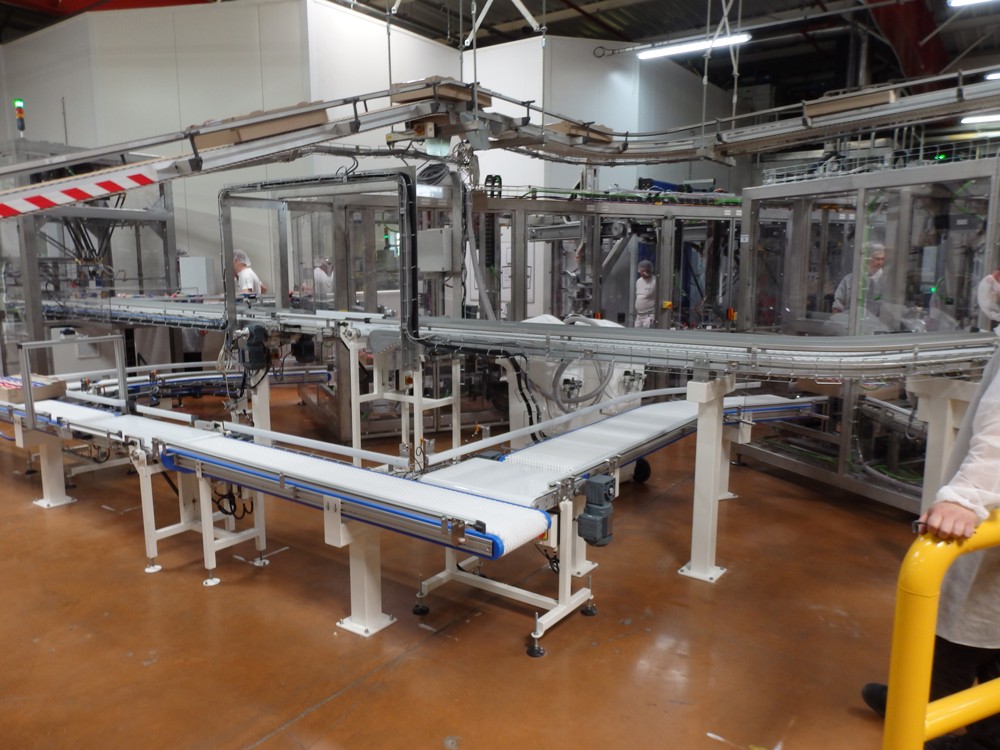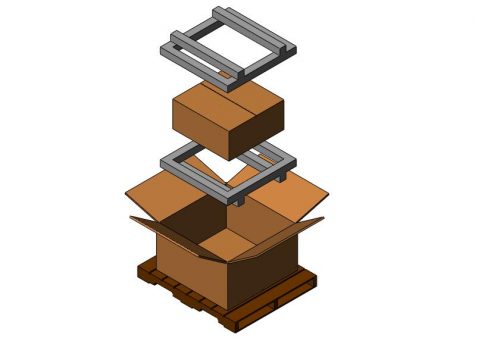Industrial Metal Packaging: Strength and Toughness in Every Style
Industrial Metal Packaging: Strength and Toughness in Every Style
Blog Article
Reliable Industrial Recycling Solutions for Sustainable Packaging: A Comprehensive Overview
In today's progressively environmentally-conscious world, the need for lasting product packaging options has never ever been greater. To meet this demand, services throughout industries are actively seeking effective commercial recycling options. Browsing the complex landscape of sustainable packaging can be testing without a comprehensive guide. That's where this comprehensive guide on reliable commercial recycling remedies for lasting product packaging can be found in. By discovering crucial locations such as packaging material selection, designing for recyclability, implementing recycling framework, teaming up with reusing partners, and tracking and measuring reusing success, this overview will equip you with the knowledge and devices essential to make enlightened decisions and drive favorable change within your company. Whether you're a product packaging expert, sustainability manager, or merely curious about the topic, this guide will certainly supply important insights and methods to aid you navigate the world of lasting packaging.
Product Packaging Product Option
The choice of product packaging products plays a crucial duty in guaranteeing the sustainability of commercial recycling options. The choice of products is key in decreasing environmental impact and taking full advantage of recycling efficiency when it comes to sustainable product packaging. Picking the ideal materials can help in reducing waste generation, preserve resources, and advertise a circular economic situation.
One important aspect to take into consideration in product packaging product choice is recyclability - bulk container recycling. Products that can be easily reused and incorporated back right into the manufacturing cycle are preferred. For instance, materials like cardboard, paper, glass, and specific kinds of plastics can be recycled multiple times without losing their quality. On the various other hand, materials that are difficult to reuse, such as non-recyclable composites or combined plastics, can create obstacles for the recycling process and may finish up in landfills or burners.
Another consideration is making use of renewable and biodegradable materials. Product packaging made from renewable energies, such as plant-based plastics or biopolymers, can help lower dependence on fossil gas and minimize climate change. Additionally, eco-friendly products break down naturally with time, minimizing the buildup of waste in landfills.
Additionally, the weight and volume of packaging materials should be decreased to decrease transportation prices and power consumption. Lightweight materials not just need less sources during manufacturing yet also add to reduce carbon exhausts during transport.
Designing for Recyclability
Product packaging developers need to focus on the usage of products that are commonly accepted for reusing and have actually developed recycling facilities. Materials such as glass, aluminum, and specific types of plastic, like Animal and HDPE, are typically recycled and should be preferred over products that are costly or hard to reuse.
Another important consideration in designing for recyclability is the removal of unnecessary components or products. By reducing the variety of layers, finishes, and additional elements, product packaging can be made easier and simpler to reuse. Furthermore, developers must aim to lower the use of combined materials, as they can make complex the reusing procedure.

Implementing Recycling Infrastructure
Reliable implementation of reusing framework is vital for the success of industrial recycling options. Without correct framework in location, the reusing process comes to be inefficient and inefficient, impeding the total goal of sustainable product packaging.
To apply recycling facilities effectively, several crucial factors need to be thought about. To start with, there ought to be a well-organized collection system that assists in the separation and collection of recyclable materials. This can include designated recycling containers in public rooms, along with collaborations with waste management companies for curbside pickup and sorting.
When gathered, the recyclable products require to be moved to recycling facilities in a timely manner. This requires efficient logistics and transportation networks, guaranteeing that the materials reach the proper centers right away.
At the reusing centers, advanced sorting and processing innovations must look at this web-site be in location to separate different sorts of products effectively. This includes making use of automated sorting devices, optical scanners, and hands-on sorting methods.
Moreover, there need to be a durable market need for recycled products. This can be attained with cooperations with makers and markets that utilize recycled products in their production procedures. Developing a steady market for recycled materials incentivizes the recycling sector and advertises the round economy.
Collaborating With Recycling Partners

One key facet of collaborating with reusing partners is the facility of clear interaction channels. It is important to establish open lines of communication to help with the exchange of info, updates, and comments. This permits both celebrations to stay educated regarding the progress of reusing initiatives and resolve any type of obstacles or concerns that may occur.
In addition, collaboration can entail joint efforts in executing and making recycling programs. Reusing partners can supply valuable understandings and guidance in establishing efficient collection systems and establishing the most appropriate recycling innovations. By interacting, companies and reusing partners can maximize the reusing process and lessen waste.
Moreover, partnership can expand beyond the operational elements of reusing. It can also include campaigning for and education initiatives. By signing up with pressures, businesses and recycling companions can elevate awareness about the value of recycling and advertise the adoption of sustainable packaging methods amongst customers and various other stakeholders.
Monitoring and Measuring Recycling Success
To guarantee the efficiency of commercial reusing remedies and the success of sustainable packaging goals, it is vital for businesses and their recycling partners to establish an extensive system for tracking and determining reusing success (industrial metal packaging). Tracking and measuring recycling success allows businesses to assess the effect of their reusing initiatives, determine areas for enhancement, and set significant targets for future progress
One way to track recycling success is through making use of information collection and evaluation tools. By gathering data on the amount of product packaging waste created, the portion of waste that is recycled, and the sorts of materials being reused, services can get important insights into their reusing efficiency. This data can after that be examined to determine patterns, patterns, and areas of ineffectiveness.
An additional essential aspect of tracking and measuring recycling success is developing standard and clear metrics. This enables companies to contrast their performance against industry standards and Visit This Link track their progression over time. Metrics such as reusing rates, waste diversion prices, and greenhouse gas discharges can provide a quantitative step of a business's reusing success.

Final Thought
Finally, implementing reliable industrial recycling solutions for lasting packaging requires cautious consideration of product packaging material option, creating for recyclability, implementing reusing facilities, teaming up with recycling companions, and tracking and gauging recycling success. By including these methods, businesses can add to a more lasting and environmentally-friendly method to product packaging, minimizing waste and advertising the circular economic situation.
By exploring crucial areas such as packaging product selection, creating for recyclability, implementing reusing framework, teaming up with recycling companions, and tracking and determining reusing success, this overview will certainly furnish you with the expertise and tools needed to make enlightened decisions and drive positive adjustment within your company. Packaging designers must this website focus on the use of materials that are commonly approved for recycling and have established reusing facilities.Partnership with reusing partners is necessary for the effective implementation of industrial recycling options and the success of lasting packaging goals. By joining forces, services and reusing companions can elevate recognition about the significance of recycling and promote the adoption of sustainable packaging methods amongst customers and various other stakeholders.
By accumulating data on the amount of packaging waste generated, the portion of waste that is recycled, and the types of materials being recycled, services can gain important understandings right into their reusing performance.
Report this page